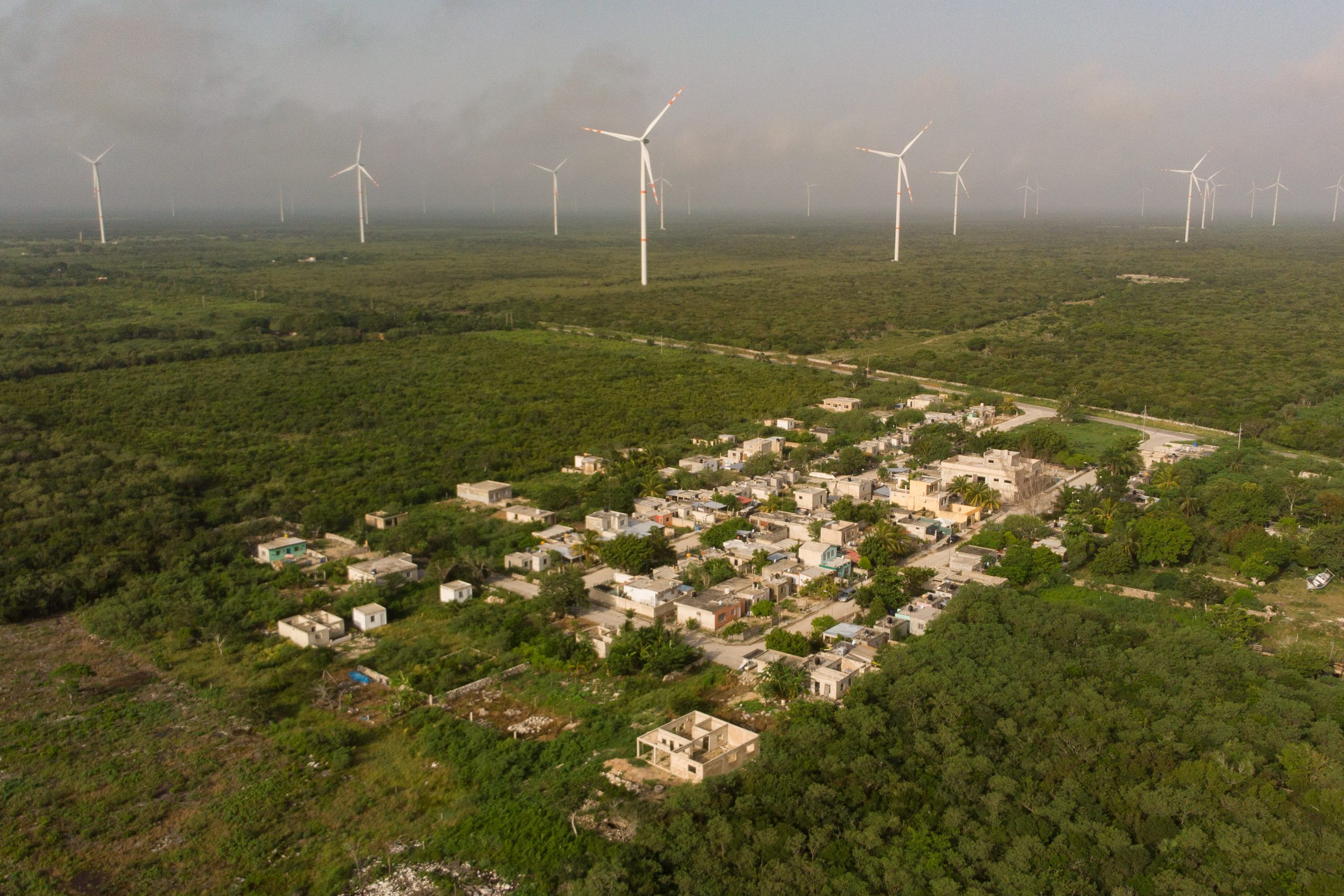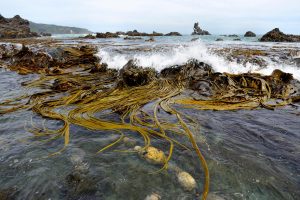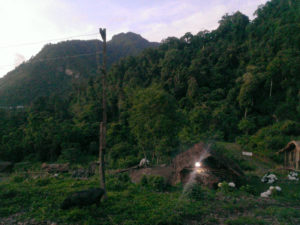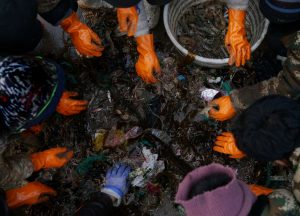Fátima Gasca Chuc’s electricity bills hit her hard in the pocket. She only has one refrigerator, a couple of fans and a television. Yet she pays around US$75 per month.
For eight years, Gazca has lived with her children in Flamingos, a coastal neighbourhood on the outskirts of Dzilam de Bravo in Mexico’s Yucatán Peninsula. The family sells cakes to support themselves and lives in a humble house. But it sits right next to the Dzilam Bravo-Eólica Golfo 1 wind farm, a megaproject that began operations in 2018 to supply electricity to private companies.
Gazca only has to open her window to see the swoop of the blades on the 125-meter-high wind turbines. She says they changed the landscape of the Yucatecan port town.
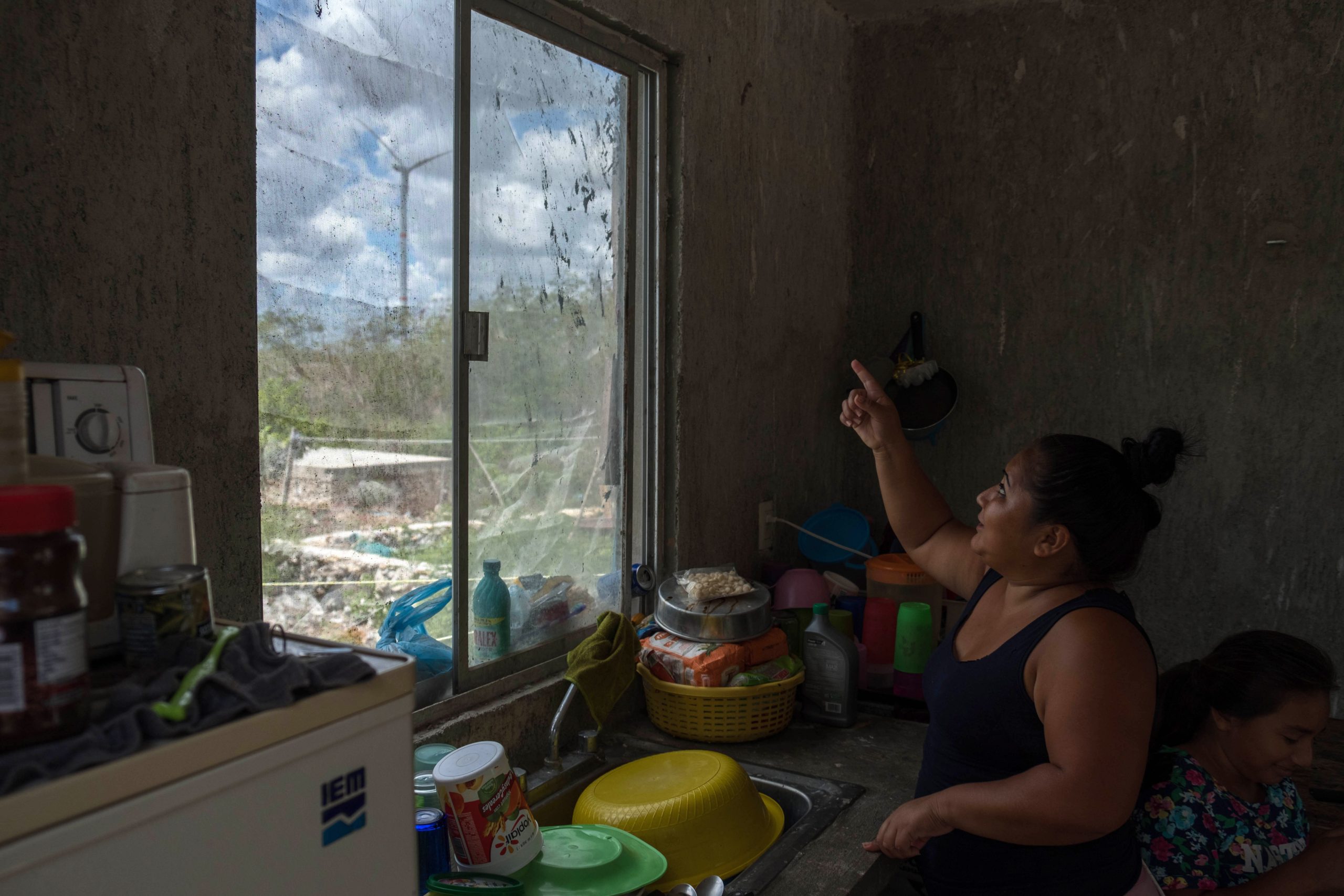
“It is a contradiction that they put that park here to benefit foreign companies so that they pay less electricity. The years go by and I continue to pay high rates,” the 46-year-old complained. “It makes me angry, [the turbines] give me a headache. We live working to pay the bill. We can’t get ahead like this!”
It is a contradiction that they put that park here to benefit foreign companies so that they pay less electricity
The blades from the 100 metre rotor diameter turbines revolve almost around the clock, harnessing the wind that comes from the sea. The buzzing bothers Gazca, especially at night. She chose to live a few kilometers from the sea, where housing options are limited, managing to buy her own property.
Yet, the disturbances and high electricity costs look set to last. The lease for the land where the plant sits expires in 20 years. Local populations also suffer from constant service disruptions, with no explanation from the Federal Electricity Commission (CFE).
Dzilam Bravo: Benefitting private parties and not local people
Mexico’s 1992 Electric Power Public Service Law, which allows private producers to generate energy in order to supply their own operations, is the legal framework that enabled the creation of Dzilam Bravo.
The Park has 28 wind turbines and an installed capacity of 70 megawatts (MW). It produces enough energy to supply 170 thousand homes per year – although its main beneficiaries are thought to be Cinepolis, El Sardinero, Mexion Corporatión and the confectioner Mars, although poor information disclosure means this is difficult to ascertain.
By generating their own energy, companies pay a fixed preferential rate for the transmission and distribution service to the CFE, saving them money.
Mexican company Vive Energía owns the park and partnered with Envision Energy, an international company dedicated mainly to the manufacture of smart wind turbines that is headquartered in Shanghai. One of its stated missions is the fight against climate change, eliminating fossil fuels and replacing them with renewable energy.
Envision has one other major wind project in Yucatán State – the 90MW Progreso plant some 80 kilometres east of Dzilam Blanco along the same coastline. They are the only Chinese-owned wind projects in Mexico.
Renewable energy looks set to undergo rapid expansion at the hands of international companies in the coming years with some five solar plants capable of adding a combined 874MW planned in the coming years, according to Boston University’s China’s Global Power Database.
Aside from Mexico, Envision’s forays into Latin America have centered on Argentina, where it is building two plants in Buenos Aires province: the 10MW García del Rio project and Villarino (50MW).
According to the Yucatán State Government, another 24 wind and solar plants are under slated for development, at a total investment of more than 84 billion pesos (US$4.2 billion).
From the first renewable energy auction in Mexico following the initiation of the 2013 reform process, nine of the 18 projects awarded were for the Peninsula. However, there was no study of their combined environmental and social impacts.

Elsewhere in Mexico, there have been demonstrations against big renewables plants by residents of Motul against companies Aldesa and Aldener, and residents of Muna and Valladolid, who even filed a lawsuit securing the definitive suspension of the Yucatán Solar project, owned by Lighting Park and Jinko Solar.
For Rodrigo Patiño Díaz of the Center for Research and Advanced Studies (Cinvestav), the idea of producing clean energy in principle sounds good, but the impacts on territories, the benefits for communities and other environmental risks must be considered.
“It is a somewhat perverse system,” he says. “For some six-year terms, private companies have the possibility of generating energy to do business, far from the original idea of nationalising electricity to supply the population.” Patiño adds that companies sell electricity using CFE’s transmission lines.
It is a somewhat perverse system
Mexico reformed its electricity law during the government of President Carlos Salinas de Gortari (1988-1994) when the now defunct North American Free Trade Agreement (NAFTA) was approved. To be competitive, the agreement argued, growing industries required more energy and CFE did not have the capacity to supply them. It was the first step towards opening up to private companies, which eventually resulted in the 2013 reform.
With fellow academics, Patiño created the Yucatán Articulation group to try to limit the impacts of wind and photovoltaic parks. He criticised authorities and companies for deceiving the population with claims that the works are necessary to improve the peninsula’s electricity supply and reduce rates accordingly.
Risks to ecosystems
Articulation also warned, before its construction, that the weight in tons of the wind turbines of the Park are a threat to the karst soil of Yucatan, which consists of limestone rock that fragments over time, forming holes, and in the it rainwater seeps quickly. This type of soil is more fragile in the coastal area, where this megaproject was built, and there is a risk that it may modify the hydrological networks of the subsoil.
Academics, authorities and local residents established an ecological protection scheme for the Yucatán coast in 2007 that did not contemplate the use of wind power in coastal municipalities due to the fragility of their ecosystems. However, the then Secretariat of Urban Development and Environment (Seduma) modified the programme in 2014, expressly to allow wind and solar parks.
The change was made during the government of [then governor of Yucatán] Rolando Zapata Bello (2012-2018) without establishing a dialogue with local populations
Now, port development, timber and non-timber forestry industries, and wind power are all allowed.
More than 70 Yucatecan academics who participated in the development of the programme spoke out against the change. They recalled consultations were held with local populations to determine the protection mechanisms for ecosystems.
“The 2007 programme posed restrictions because the coastline is full of Protected Natural Areas and because of its great biodiversity,” said Patiño “The change was made during the government of [then governor of Yucatán] Rolando Zapata Bello (2012-2018) without establishing a dialogue with local populations.”
“Minor” impacts
Benigno Villarreal del Río, director of Vive Energía, said they generate clean energy, which is cheaper than hydrocarbons, and that private companies obtain important economic benefits by reducing production costs
“Although it is true that the energy users from an administrative-economic point of view are private companies, the most important thing is that the energy produced there remains in the peninsular electrical system,”he said. “The physical energy is consumed by the families closest to the park.”
When asked about complaints by local communities about high prices and service failures, Villarreal stressed that these are not his company’s responsibility, since the law exclusively empowers the CFE to supply homes.
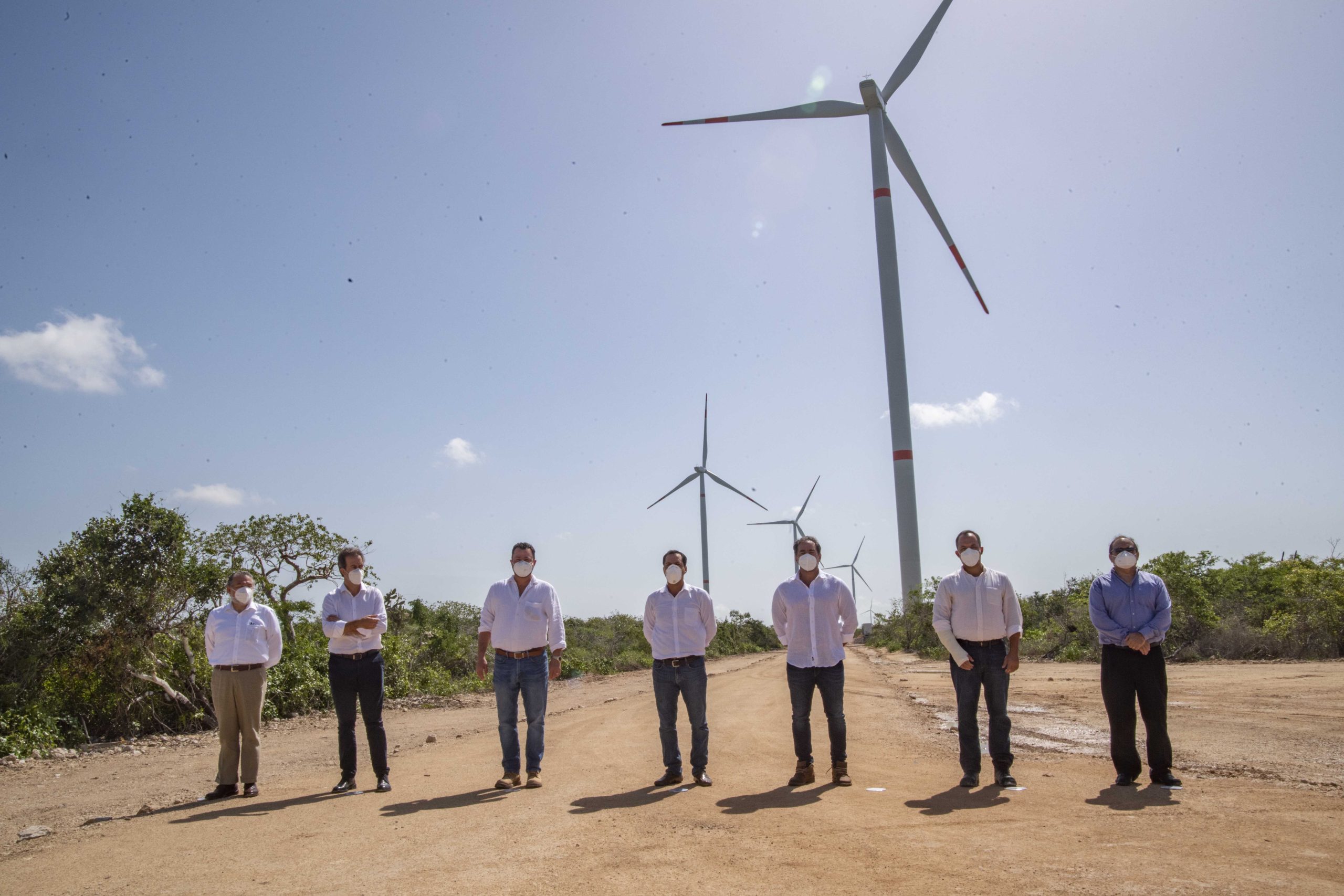
Villareal also brushed off Articulation Yucatán’s complaints, saying they were isolated voices, and that the view of the scientific community at the global level is that renewable energy projects have the least environmental impact.
In regions accommodating mega-works such as Dzilam de Bravo, biological corridors and “environmental oases” are created for endemic species, as a condition of government permits, Villareal said.
Between 50 and 60 birds die each year when colliding with turbine blades at the Dzilam Park, according to Villareal, a number he called “very small”. “They die more on power lines, on roads or in buildings than in a wind farm,” he said.
The Park has a special bird watching tower and its biologists can request that the wind turbines stop when flocks approach.
The Yucatán Scientific Research Center (CICY) said the impact assessment for Dzilam Bravo omitted prevention measures for avifauna and those relating to terrestrial fauna were unacceptable. For example, there was no mention of the Mexican earwig hummingbird (Doricha eliza), a quasi-endemic bird of the Yucatan Peninsula that is in danger of extinction and nests in the Dzilam de Bravo region.
Anthropologist Juan Carlos Encalada Gómez, who authored a study on Dzilam Bravo, said impact assessments included no information on the wind farm noise or the flickering of their blades on human health.
The 2013 Energy Transition Law states that areas with high potential for clean energy generation, must undergo a Strategic Environmental Assessment (SEA), that considers the impacts of projects in combination with others.
“The law says that the Ministry of the Environment (Semarnat) should carry out this study in order to issue permits to each company before they all start operating,” lamented Patiño Díaz. “They never did it in the Yucatan Peninsula and gave the permits individually.”
